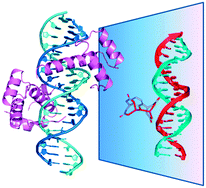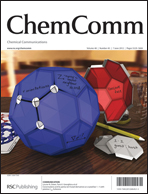Progress in artificial metallonucleases
Abstract
The development of synthetic agents able to hydrolytically cleave DNA with high efficiency and selectivity is still a fascinating challenge. Over the years, many examples have been reported reproducing part of the behaviour of the corresponding natural enzymes. Eventually, even the possibility to apply such systems to the manipulation of DNA of higher organisms has been demonstrated. However, efficiency of enzymes is still unrivalled. This feature article discusses the progress reported toward the realization of synthetic nucleases with particular attention to the comprehension of the reaction mechanisms and to the strategies that need to be addressed to obtain more efficient systems.


 Please wait while we load your content...
Please wait while we load your content...